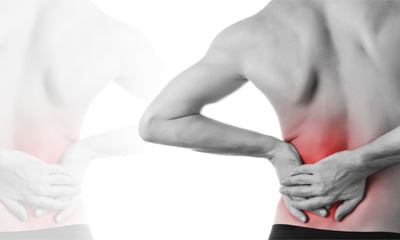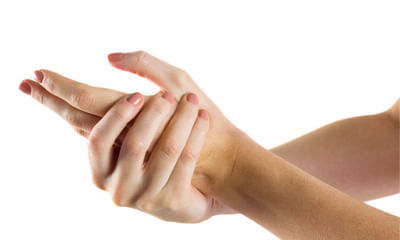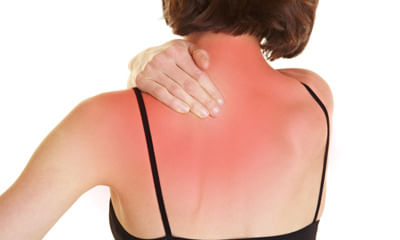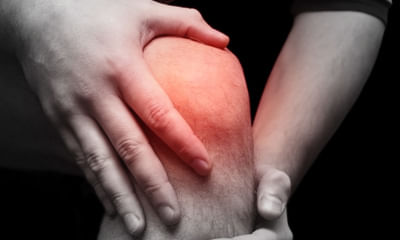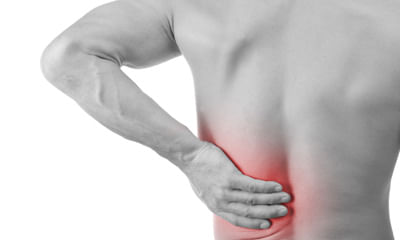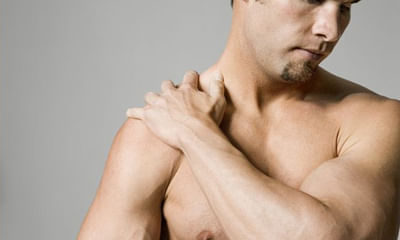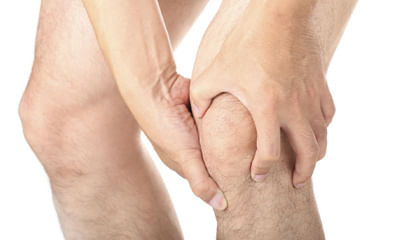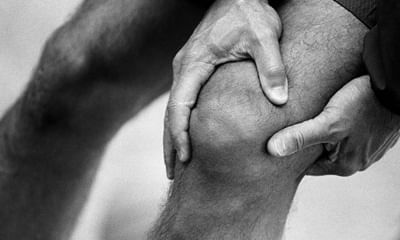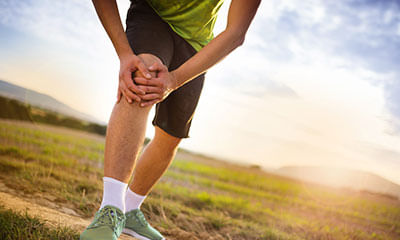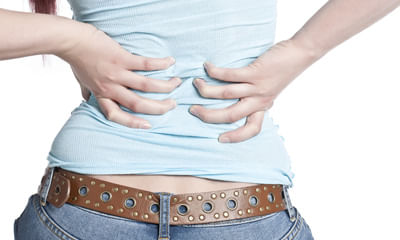Heel Pain During Sleep
There is a female of around 40 years she has heel pain (pricking pain) since two months what is the best treatment to gi ...
Ask Free Question
Minutes at a time. This is especially beneficial at the end of a long day or when you’ve spent a lot of time on your feet. Or, roll a frozen water bottle under your foot. This method incorporates a bit of massage, relieving tightness in the bottom of your foot. Massage. Massaging the arch of your foot helps to relieve pain and promote mobility. Use your fingers and knuckles to deeply massage your foot for 1 to 5 minutes at a time. One technique is to place both thumbs at the center line of your arch and move them to the outer edges of your feet. Inserts. Use cushion inserts in your shoes for additional support and cushioning. Inexpensive options can be purchased off the shelf. Wear supportive shoes with thicker soles and extra cushioning for additional support that can help to reduce tension in the plantar fascia. Kinesiology tape can be used to improve arch and heel support. Night splints. Many people find quick and effective results by using night splints. They can be worn while sleeping to stretch the plantar fascia. They help to keep the plantar fascia relaxed and prevent you from pointing your feet down. Exercise foot flex use your hand to pull your toes back toward your shin. Hold this position for about 30 seconds .do each side two to three times. Toe towel grab place a small towel under your foot. Curl your toes to grip the towel. Raise the front of your foot off the floor. Hold this position for a few seconds. Release the towel as you lift up your toes and spread them as far apart as possible. Heel and calf stretch to do this stretch: 1.stand facing a wall. 2.place your hands on the wall and move one foot back as far as you can comfortably. Toes on both feet should be facing forward, heels flat, with a slight bend in your knees. 3.lean into the stretch and hold for 30 seconds. You should feel the stretch in your back leg. 4.change legs and repeat. 5.do this stretch twice for both legs. Golf ball roll roll a golf baell under your right foot. Continue for up to 1 minute. Do each foot two to three times.
I am 50 year old woman I have a heel pain can you please suggest me a well medicine for this doctor. Thank you. ...
Ask Free Question
Here are some non-medication treatments commonly recommended for heel pain: rest: avoid activities that aggravate the pain and give your heels time to rest and heal. Ice: apply ice packs to the affected area for about 15-20 minutes several times a day to reduce inflammation and relieve pain. Stretching exercises: perform gentle stretching exercises for the calf muscles and plantar fascia to improve flexibility and reduce tension in the heel area. Footwear: wear supportive shoes with good arch support and cushioning to reduce strain on the heels. Avoid flat shoes or high heels that may exacerbate heel pain. Orthotic inserts: consider using orthotic inserts or heel cups to provide additional support and cushioning for your heels. Night splints: use night splints while sleeping to keep the foot in a neutral position and stretch the plantar fascia and achilles tendon. Physical therapy: a physical therapist can provide specialized exercises and treatments to alleviate heel pain and improve foot mechanics. Weight management: maintain a healthy weight to reduce pressure on the heels and minimize strain on the feet. Avoid barefoot walking: avoid walking barefoot, especially on hard surfaces, to prevent further irritation to the heels. If conservative treatments do not provide relief, your healthcare provider may recommend other interventions such as corticosteroid injections, shockwave therapy, or surgery in severe cases.
I am 50 years .since from 2 months I am suffering from stabbing pain near the heel. Pain is very worse in the morning I ...
Ask Free Question
It sounds like you may be experiencing a condition called plantar fasciitis, which is characterized by stabbing pain near the heel, especially in the morning or after periods of rest. Plantar fasciitis is a common cause of heel pain in adults, particularly those who are middle-aged or older. Here are some non-prescription treatment options that may help relieve your heel pain: over-the-counter pain relievers: nonsteroidal anti-inflammatory drugs (nsaids) such as ibuprofen (advil, motrin) or naproxen (aleve) can help reduce inflammation and alleviate pain. However, it's important to follow the recommended dosage and consult with a healthcare professional if you have any underlying medical conditions or are taking other medications. Footwear: wear supportive shoes with good arch support and cushioning to reduce strain on the heels. Avoid walking barefoot or wearing unsupportive footwear, especially on hard surfaces. Stretching exercises: perform gentle stretching exercises for the calf muscles and plantar fascia to improve flexibility and reduce tension in the heel area. Examples include calf stretches, towel stretches, and plantar fascia stretches. Ice therapy: apply ice packs to the affected heel for about 15-20 minutes several times a day to reduce inflammation and relieve pain. Orthotic inserts: consider using orthotic inserts or heel cups to provide additional support and cushioning for your heels. These can help distribute pressure more evenly and reduce strain on the plantar fascia. Night splints: consider using night splints while sleeping to keep the foot in a neutral position and stretch the plantar fascia, which may help alleviate morning heel pain. Physical therapy: a physical therapist can provide specialized exercises and treatments to alleviate heel pain and improve foot mechanics. They may also use techniques such as ultrasound therapy or soft tissue mobilization to reduce inflammation and promote healing.
Hello sir, my mother age 58 years no diabetes, no chronic diseases. Present since she is suffering with both knee pains, ...
Ask Free Question
Ice therapy would definitely help to reduce the inflammation. We also advise you to use knee cap which would help to prevent the knee from damaging further and also to maintain the quadriceps muscle tone. Stiffness might have developed due to weakness of the ligaments &inflammed cartilage. Specific knee exercises will also help ie. Keeping ball underneath the knee and keep pressing it. That's the simple exercise which will help you to strengthen the knee. You need to consume good protein and iron diet in your body which will help you to break the fatigue and general body pain. However non veg foods definitely makes you to get increased with the toxin levels in the body and it makes your knee to have less fluid content in the system. In general we suggest patients who has knee pain to eat more water content vegetables which will definitely help you to feel better. This is a general knee pain and for this you can follow these measures: one keep a pillow right under the knee while sleeping, next is you can keep ice in the painful area for about 5--10 minutes, it looks like you are is important to check that. Anaemia always leads to the symptoms of being tired and also having body pain though there may not be any pathological reasons for knee pain. With knee exercises you will definitely feel better and muscles must be strengthened. •patellar tendinitis: •risk factor •a combination of factors may contribute to the development of patellar tendinitis, including: •physical activity. •running and jumping are most commonly associated with patellar tendinitis. Sudden increases in how hard or how often you engage in the activity also add stress to the tendon, as can changing your running shoes. •tight leg muscles. Tight thigh muscles (quadriceps) and hamstrings, which run up the back of your thighs, can increase strain on your patellar tendon. ••muscular imbalance. •if some muscles in your legs are much stronger than others, the stronger muscles could pull harder on your patellar tendon. This uneven pull could cause tendinitis. •chronic illness. •some illnesses disrupt blood flow to the knee, which weakens the tendon. Examples include kidney failure, autoimmune diseases such as lupus or rheumatoid arthritis and metabolic diseases such as diabetes. •complications •if you try to work through your pain, ignoring your body's warning signs, you could cause increasingly larger tears in the patellar tendon. Knee pain and reduced function can persist if you don't tend to the problem, and you may progress to the more serious patellar tendinopathy. •prevention •to reduce your risk of developing patellar tendinitis, take these steps: •don't play through pain. As soon as you notice exercise-related knee pain, ice the area and rest. Until your knee is pain-free, avoid activities that put stress on your patellar tendon. •strengthen your muscles. Strong thigh muscles are better able to handle the stresses that can cause patellar tendinitis. Eccentric exercises, which involve lowering your leg very slowly after extending your knee, are particularly helpful. •improve your technique. To be sure you're using your body correctly, consider taking lessons or getting professional instructions when starting a new sport or using exercise equipment. •therapy •a variety of physical therapy techniques can help reduce the symptoms associated with patellar tendinitis, including: •patellar tendon strap. A strap that applies pressure to your patellar tendon can help to distribute force away from the tendon and direct it through the strap instead. This may help relieve pain. •iontophoresis. This therapy involves spreading a corticosteroid medicine on your skin and then using a device that delivers a low electrical charge to push the medication through your skin. •platelet-rich plasma injection. This type of injection has been tried in some people with chronic patellar tendon problems. Studies are ongoing. It is hoped the injections might promote new tissue formation and help heal tendon damage. •probably your stamina would've gone down due to over use of the joints and the metabolic activity is more due to running. You need to consume good protein diet so that your body will act as a reservoir. It will help you to fight against rather than affecting one particular area of your body for eg. Knee joint. For knee ligament pain or inflammation you need to keep ice which will help you to prevent the inflammation progressing further. •patellofemoral pain syndrome •usually fully relieved with simple measures or physical therapy. It may recur, however, if you do not make adjustments to your training routine or activity level. It is essential to maintain appropriate conditioning of the muscles around the knee, particularly the quadriceps and the hamstrings. •there are additional steps that you can take to prevent recurrence of patellofemoral •they include: •wearing shoes appropriate to your activities •warming up thoroughly before physical activity •incorporating stretching and flexibility exercises for the quadriceps and hamstrings into your warm-up routine, and stretching after physical activity •increasing training gradually •reducing any activity that has hurt your knees in the past •maintaining a healthy body weight to avoid overstressing your knees ••d cartilageacl •joints, ie. In the upper limbs if the pain is present in the fingers/wrist and in the lower limbs it the pain is present in the toes/ ankle, then we shall definitely say it is rheumatic arthritis. •if your proximal joints (ie. Shoulder, hip & knee has pain) then you can pour hot (warm) water in that area to reduce the inflammation. If you have pain in the distal joints ie. Wrist, fingers, ankle, toes then you can wear either elbow brace or wrist brace which will help you to feel warm and very protective. And also immerse the distal joints in the hot water tub which will help you to reduce the pain. ••knee pain during driving or watching movie. •it might due to lack of movements in the knee while the joints are immobilized during driving and while watching movies. It is important that you need to have movements in and around the knee so that the blood flow will not be disturbed. •knee ligament laxity•if you have problem in your legs then it might be due to ligament laxity where your legs would become very weak due to the old ligament injury and that should be treated immediately. •wear knee cap so that you will feel firm while walking or climbing stairs.•this is a general strain and for this you can follow these measures: one keep a pillow right under the knee while sleeping, next is you can keep ice in the painful area for about 5--10 minutes, if pain still persists you can stretch your body by twisting the waist on both sides how we used to do in the school drill similarly you can try! one time you can do hot water fermentation that would help to reduce the muscle strain.•legs becoming numb and also pain is there when the patient walks for 10-15 minutes?•it looks like you are anaemic. If you feel that the legs are becoming numb then keep your legs warm which is important, probably you can wear mcr chappals inside the house/ socks inside the house. Put a door mat when ever you sit so that you will feel comfortable. Also pour warm water in the legs which would help you to get better circulation. •knee pain. If you are overweight, losing weight will also help to reduce pressure on your knee. •knee pain, when leg folding time get pain. The importance of buying braces and splints from us – orthopaedic support braces we suggest you to wear knee brace which is available at our clinic. If you want you can buy from us, if you are far away from chennai we can send you by courier. The reason why we are conveying you to buy from us is we can demonstrate over the videocall (using whatsapp) and also we can monitor you throughout when to wear it and how long to wear it. And also if you find any difficulty wearing the brace you can also revert back to us for few more suggestions and we can propose you good solution how to go about it. Resisted terminal knee extension: make a loop with a piece of elastic tubing by tying a knot in both ends. Close the knot in a door at knee height. Step into the loop with your injured leg so the tubing is around the back of your knee. Lift the other foot off the ground and hold onto a chair for balance, if needed. Bend the knee with tubing about 45 degrees. Slowly straighten your leg, keeping your thigh muscle tight as you do this. Repeat 15 times. Do 2 sets of 15. If you need an easier way to do this, stand on both legs for better support while you do the exercise. Standing calf stretch: stand facing a wall with your hands on the wall at about eye level. Keep as arthritis is very common that you get generally bilaterally. Ice therapy would definitely help to reduce the inflammation. We also advise you to use knee cap which would help to prevent the knee from damaging further and also to maintain the quadriceps muscle tone 1. Heel and calf stretch 2. Quadriceps stretch to do this stretch: 1. Stand next to a wall or use a chair for support. Your feet should be shoulder-width apart. 2. Bend one knee so your foot goes up toward your glutes. 3. Grab your ankle and gently pull it toward your glutes as far as you can comfortably. 4. Hold for 30 seconds. 5. Return to the starting position and change legs. 6. Repeat 2 times on each side. You need to consume good protein and iron diet in your body which will help you to break the fatigue and body pain. You have to reduce the weight by walking minimum 1 km per day. Slowly reduce the weight and slowly avoid adding salt in the diet which will help you to prevent water retention in the body. Excess salt in general leads to water in the body which might be the reason for you to have leg pain. Hotwater fermentation that would help you to get relieved from joint pains. But food precautions, it is better to avoid tamarind in the food rather to add lime or mango. You can generally do basic aerobic exercises which will definitely help to improve the body weakness. Consume good protein and vitamin diet which will help you to improve your weakness of the whole body. You can give good vitamin d and calcium which will help to have quick healing. If you are a non veg person consume seer fish or if you are a veg person eat mushrooms which has vitamin d3. You need to consume water content vegetables which will make you feel hydrated. A good brace will protect your knee and take the pressure off your meniscus, allowing it to rest. Your doctor may recommend the rice regimen—rest, ice, compression, and elevation—to treat a eroded cartilage which is the main reason for the synovial fluid to get drained. Resting your knee can help relieve your symptoms. Steps to heal a worn out cartilage naturally: rest: it's crucial to rest your knee after it starts to ache. You should not participate in activities where you could cause additional strain. Ice: apply ice to your knee for 15 minutes at four-hour intervals.
Asalamu alaikum Dr. shab 2 year ago I was pruning my orchard my right hand got tired I use my left hand unfortunately my ...
Ask Free Question
•mobility exercises rest. Avoid doing things that require you to bend at the hip or put a lot of pressure on the hip. Avoid sleeping on the side of your hip that is painful and sitting for long periods of time •cold and heat. Treating pain with heat and cold may help. Wrap an ice pack or a bag of frozen vegetables in a towel to ice your hip. A warm bath or shower may also help reduce your pain and prepare your muscles for stretching. •stretch. Gently stretching your body may reduce hip pain, especially if the cause is a strain or pinched nerve. 1. Knee lift1.Lie on the back, extending both legs flat along the floor. 2.Keeping the left leg straight, pull the right knee up toward the chest. 3.Place both hands on top of the knee to help pull it in toward the chest. 4.Hold the stretch for 10 seconds. 5.Let go of the knee and gently lower the leg back toward the floor. 6.Repeat this exercise 5–10 times on each knee. 2.double hip rotation 1.Lie flat on the back. Then, bend the knees and bring them toward the body until the feet are flat on the floor. 2.Gently rotate the knees to the left, lowering them toward the floor. Rotate the head to face the right while keeping the shoulders against the floor. 3.Hold this position for 20–30 seconds. 4.Slowly return both the head and knees to the starting position. 5.Repeat on the opposite side. 3.bridging 1.Lie on the back, bending both legs at the knee and placing the feet flat on the floor. Keep the arms by the sides of the body with the palms facing downward. If necessary, place a small pillow underneath the neck and head for support. 2.Slowly lift the pelvis and lower back upward. Be sure to keep the shoulders and upper body on the floor. 3.Hold the position for 5 seconds. 4.Gradually lower the back and pelvis toward the floor, starting at the top of the spine. Roll down through the spine until the entire back is flat against the floor again. 5.Repeat this exercise 5–10 times. 4.butterfly stretch 1.Sit on the ground, bend your legs, and bring the soles of your feet together so they touch, letting your knees fall out to the sides. 2.Bring your heels as close to your body as you can and lean forward into the stretch, using your elbows to gently push your knees toward the ground. 5.side lying leg raise 1.Lay on your right side with your legs straight and stacked on top of each other, propping yourself up with your elbow. If you’re using an exercise band, position it just above your knees. 2.Keeping your hips stacked, engage your core and lift your left leg straight up as far as you can. Slowly lower back down. Repeat on other side. 6.hip flexion 1.Stand upright. 2.Extend one arm out to the side and hold on to a sturdy surface, such as a wall, table, or chair, for support. 3.Slowly raise the right knee to the level of the hip or as far as is comfortable while keeping the left leg straight. 4.Only hold this position for a second before placing the left foot back on the floor. 5.Repeat with the left knee. 6.Do 5–10 repetitions of this exercise. 7.hip extension 1.Stand upright with the legs straight and the feet shoulder-width apart. 2.Extend both arms out in front and hold on to a chair, table, or wall for support. 3.Keeping the right leg straight, lift the left leg backward without bending the knee. 4.Lift the leg as far as possible without causing discomfort, then clench the buttock tightly and hold the position for 5 seconds. Repeat this stretch 5–10 times on each leg. To increase the resistance, try attaching small weights to the legs. 8.hip abduction 1.Stand upright. 2.Extend the left arm out to the side and hold on to something solid, such as a chair, table, or wall. 3.Starting with the feet together, lift the right leg out to the right side. Keep the left leg straight and avoid rotating the hips. 4.Hold the position for 5 seconds and then slowly return the leg to the starting position. Do this exercise 5–10 times on one leg, then repeat it on the other side.
I am 45 years old height 5'8" weight about 81 kg. Am having frozen shoulder in right shoulder. Can anti inflammatory inj ...
Ask Free Question
Do’s and don’ts for shoulder pain do’s do the prescribed exercise regularly to maintain strength, flexibility and range of motion. Do keep the affected arm supported. Use an ice pack for pain relief. Apply the ice pack 3-4 times a day for 10 minutes. Don’ts don't sleep on the affected side. Don't lift heavyweight with the affected arm. Don't jerk your shoulder to avoid stress. Don't use the arm to push yourself up in bed or from a chair. Don't participate in contact sports or do any repetitive heavy lifting. We suggest you to wear shoulder support brace which is available in two different sizes which makes the patient to feel comfortable as it maintains the shoulder in anatomical position and the short lever is maintained. The reason to maintain the short lever in the shoulder joint is it helps the shoulder to prevent the movements which itself is the key to have better progression of healing in the shoulder region. This is suggested for the following conditions. This shoulder support brace what we are suggesting for you is available at our clinic. If you want you can buy from us, if you are far away from chennai we can send you by courier. The reason why we are conveying you to buy from us is we can demonstrate over the videocall (using whatsapp) and also we can monitor you throughout when to wear it and how long to wear it. And also if you find any difficulty wearing the brace you can also revert back to us for few more suggestions and we can propose you good solution how to go about it. Strenghtening exercises 1.pendulum stretch do this exercise first. Relax your shoulders. Stand and lean over slightly, allowing the affected arm to hang down. Swing the arm in a small circle — about a foot in diameter. Perform 10 revolutions in each direction, once a day. As your symptoms improve, increase the diameter of your swing, but never force it. When you're ready for more, increase the stretch by holding a light weight (three to five pounds) in the swinging arm. 2. Towel stretch hold one end of a three-foot-long towel behind your back and grab the opposite end with your other hand. Hold the towel in a horizontal position. Use your good arm to pull the affected arm upward to stretch it. You can also do an advanced version of this exercise with the towel draped over your good shoulder. Hold the bottom of the towel with the affected arm and pull it toward the lower back with the unaffected arm. Do this 10 to 20 times a day. 3. Finger walk face a wall three-quarters of an arm's length away. Reach out and touch the wall at waist level with the fingertips of the affected arm. With your elbow slightly bent, slowly walk your fingers up the wall, spider-like, until you've raised your arm as far as you comfortably can. Your fingers should be doing the work, not your shoulder muscles. Slowly lower the arm (with the help of the good arm, if necessary) and repeat. Perform this exercise 10 to 20 times a day. 4. Cross-body reachsit or stand. Use your good arm to lift your affected arm at the elbow, and bring it up and across your body, exerting gentle pressure to stretch the shoulder. Hold the stretch for 15 to 20 seconds. Do this 10 to 20 times per day. 5. Armpit stretch using your good arm, lift the affected arm onto a shelf about breast-high. Gently bend your knees, opening up the armpit. Deepen your knee bend slightly, gently stretching the armpit, and then straighten. With each knee bend, stretch a little further, but don't force it. Do this 10 to 20 times each day. Starting to strengthen as your range of motion improves, add rotator cuff–strengthening exercises. Be sure to warm up your shoulder and do your stretching exercises before you perform strengthening exercises. 6. Outward rotationhold a rubber exercise band between your hands with your elbows at a 90-degree angle close to your sides. Rotate the lower part of the affected arm outward two or three inches and hold for five seconds. Repeat 10 to 15 times, once a day. 7. Inward rotation stand next to a closed door, and hook one end of a rubber exercise band around the doorknob. Hold the other end with the hand of the affected arm, holding your elbow at a 90-degree angle. Pull the band toward your body two or three inches and hold for five seconds. Repeat 10 to 15 times, once a day. Shoulder exercises and stretches regular exercises and stretches can keep your shoulder strong and flexible. A few things to remember before swinging in to exercises: •stop any exercise if you have more shoulder pain. It may be too soon for you to try. •watch your form. Exercising incorrectly can also cause or worsen shoulder problems. •warm up, even before deep stretching. Light shoulder rolls, gentle movements, or even a warm shower are all ways to warm up your muscles before exercise and stretching. Pendulum stretch for range of motion•stand and bend at the waist. •let your arm on the injured side hang straight down. •keep your neck relaxed. •move your arm in a circle up to 20 times. •do once or more times in a day. Overhead shoulder stretch•sit or stand to do this shoulder stretch. •intertwine your fingers in front of you. •bend your elbows and raise your arms above your head. You can also place your hands on your head or behind it. •gently squeeze your shoulder blades together to move your elbows back. •continue for up to 20 repetitions. Repeat 5 to 10 times a day.Pa shoulder: do’s: •exercise regularly and immediately follow a physical therapy program. •use an ice pack for pain relief. Apply the ice pack 3-4 times a day for 10 minutes. •take pain relievers as directed by your shoulder doctor. Don’ts: •don’t stop moving your shoulders entirely because of the pain. •do not do activities that involve sudden movements, such as heavy lifting on the affected side. As your body recovers, continue to make gentle movements, but avoid irritating and moving your shoulders. •doesn’t sleep on a sore shoulder •don’t miss your workout routine and physical therapy. •don’t neglect your diet. Frozen shoulder is associated with general health. Frozen shoulder is strongly associated with many low-grade systemic inflammatory conditions. Your body needs healthy, anti-inflammatory food to recover. •stop smoking and drinking alcohol. No it will definitely help you to come out of pain. You can consume preferably one tablet per day and not more than that. Drink lot of hot water during your cycle time as there might be gastric trouble during menstrual cycle. We cannot give suggestions about homeopathy medicine as we are physiotherapists. I have given the following suggestions and protocols for your other pain in the back, heel and shoulder.
I have little knee pain after doing squat exercise. Earlier I only feel little knee pain while doing squat. But on 1st s ...
Ask Free Question
Resisted terminal knee extension: make a loop with a piece of elastic tubing by tying a knot in both ends. Close the knot in a door at knee height. Step into the loop with your injured leg so the tubing is around the back of your knee. Lift the other foot off the ground and hold onto a chair for balance, if needed. Bend the knee with tubing about 45 degrees. Slowly straighten your leg, keeping your thigh muscle tight as you do this. Repeat 15 times. Do 2 sets of 15. If you need an easier way to do this, stand on both legs for better support while you do the exercise. Standing calf stretch: stand facing a wall with your hands on the wall at about eye level. Keep as arthritis is very common that you get generally bilaterally. Ice therapy would definitely help to reduce the inflammation. We also advise you to use knee cap which would help to prevent the knee from damaging further and also to maintain the importance of buying braces and splints from us – orthopaedic support braces we suggest you to wear knee brace which is available at our clinic. If you want you can buy from us, if you are far away from chennai we can send you by courier. The reason why we are conveying you to buy from us is we can demonstrate over the videocall (using whatsapp) and also we can monitor you throughout when to wear it and how long to wear it. And also if you find any difficulty wearing the brace you can also revert back to us for few more suggestions and we can propose you good solution how to go about it. Resisted terminal knee extension: make a loop with a piece of elastic tubing by tying a knot in both ends. Close the knot in a door at knee height. Step into the loop with your injured leg so the tubing is around the back of your knee. Lift the other foot off the ground and hold onto a chair for balance, if needed. Bend the knee with tubing about 45 degrees. Slowly straighten your leg, keeping your thigh muscle tight as you do this. Repeat 15 times. Do 2 sets of 15. If you need an easier way to do this, stand on both legs for better support while you do the exercise. Standing calf stretch: stand facing a wall with your hands on the wall at about eye level. Keep as arthritis is very common that you get generally bilaterally. Ice therapy would definitely help to reduce the inflammation. We also advise you to use knee cap which would help to prevent the knee from damaging further and also to maintain the quadriceps muscle tone 1. Heel and calf stretch 2. Quadriceps stretch to do this stretch: 1. Stand next to a wall or use a chair for support. Your feet should be shoulder-width apart. 2. Bend one knee so your foot goes up toward your glutes. 3. Grab your ankle and gently pull it toward your glutes as far as you can comfortably. 4. Hold for 30 seconds. 5. Return to the starting position and change legs. 6. Repeat 2 times on each side. Ice therapy would definitely help to reduce the inflammation. We also advise you to use knee cap which would help to prevent the knee from damaging further and also to maintain the quadriceps muscle tone. Stiffness have developed due to weakness of the ligaments &inflammed cartilage. Specific knee exercises will also help ie. Keeping ball underneath the knee and keep pressing it. That's the simple exercise which will help you to strengthen the knee this must be due to your muscular strain and posture and it may not be due to any other reasons. It is better to correct your addictive behaviour by consulting the right physician. For the time being for the back pain, apply ice. Neck tilt: from the sitting position, tilt your head down so your chin touches your chest. Hold this position for 5 second s. Return to the starting position and repeat. Do this five times. Side-to-side neck tilt. From the same starting position, tilt you neck toward one shoulder, leading with your ear. Hold for 5 seconds and then return to the starting position. Do this five times on each side. Neck turn. Look straight ahead, then turn your head to one side, keeping your chin at the same level. Do this five times on each side. Neck stretch. Holding the rest of your body straight, push your chin forward, stretching your throat. Hold for 5 seconds. From the same starting position, push your chin backward and hold for 5 seconds. Do the forward and backward stretch five times each. If any of these exercises cause severe pain or weakness in your hands or arms, stop right away and talk with your doctor this is a general knee pain and for this you can follow these measures: one keep a pillow right under the knee while sleeping, next is you can keep ice in the painful area for about 5--10 minutes, it looks like you are is important to check that. Anaemia always leads to the symptoms of being tired and also having body pain though there may not be any pathological reasons for knee pain. With knee exercises you will definitely feel better and muscles must be strengthened.
I have little knee pain after doing squat exercise. Earlier I only feel little knee pain while doing squat. But on 1st s ...
Ask Free Question
Resisted terminal knee extension: make a loop with a piece of elastic tubing by tying a knot in both ends. Close the knot in a door at knee height. Step into the loop with your injured leg so the tubing is around the back of your knee. Lift the other foot off the ground and hold onto a chair for balance, if needed. Bend the knee with tubing about 45 degrees. Slowly straighten your leg, keeping your thigh muscle tight as you do this. Repeat 15 times. Do 2 sets of 15. If you need an easier way to do this, stand on both legs for better support while you do the exercise. Standing calf stretch: stand facing a wall with your hands on the wall at about eye level. Keep as arthritis is very common that you get generally bilaterally. Ice therapy would definitely help to reduce the inflammation. We also advise you to use knee cap which would help to prevent the knee from damaging further and also to maintain the importance of buying braces and splints from us – orthopaedic support braces we suggest you to wear knee brace which is available at our clinic. If you want you can buy from us, if you are far away from chennai we can send you by courier. The reason why we are conveying you to buy from us is we can demonstrate over the videocall (using whatsapp) and also we can monitor you throughout when to wear it and how long to wear it. And also if you find any difficulty wearing the brace you can also revert back to us for few more suggestions and we can propose you good solution how to go about it. Resisted terminal knee extension: make a loop with a piece of elastic tubing by tying a knot in both ends. Close the knot in a door at knee height. Step into the loop with your injured leg so the tubing is around the back of your knee. Lift the other foot off the ground and hold onto a chair for balance, if needed. Bend the knee with tubing about 45 degrees. Slowly straighten your leg, keeping your thigh muscle tight as you do this. Repeat 15 times. Do 2 sets of 15. If you need an easier way to do this, stand on both legs for better support while you do the exercise. Standing calf stretch: stand facing a wall with your hands on the wall at about eye level. Keep as arthritis is very common that you get generally bilaterally. Ice therapy would definitely help to reduce the inflammation. We also advise you to use knee cap which would help to prevent the knee from damaging further and also to maintain the quadriceps muscle tone 1. Heel and calf stretch 2. Quadriceps stretch to do this stretch: 1. Stand next to a wall or use a chair for support. Your feet should be shoulder-width apart. 2. Bend one knee so your foot goes up toward your glutes. 3. Grab your ankle and gently pull it toward your glutes as far as you can comfortably. 4. Hold for 30 seconds. 5. Return to the starting position and change legs. 6. Repeat 2 times on each side. Ice therapy would definitely help to reduce the inflammation. We also advise you to use knee cap which would help to prevent the knee from damaging further and also to maintain the quadriceps muscle tone. Stiffness have developed due to weakness of the ligaments &inflammed cartilage. Specific knee exercises will also help ie. Keeping ball underneath the knee and keep pressing it. That's the simple exercise which will help you to strengthen the knee this must be due to your muscular strain and posture and it may not be due to any other reasons. It is better to correct your addictive behaviour by consulting the right physician. For the time being for the back pain, apply ice.Neck tilt: from the sitting position, tilt your head down so your chin touches your chest. Hold this position for 5 second s. Return to the starting position and repeat. Do this five times. Side-to-side neck tilt. From the same starting position, tilt you neck toward one shoulder, leading with your ear. Hold for 5 seconds and then return to the starting position. Do this five times on each side. Neck turn. Look straight ahead, then turn your head to one side, keeping your chin at the same level. Do this five times on each side. Neck stretch. Holding the rest of your body straight, push your chin forward, stretching your throat. Hold for 5 seconds. From the same starting position, push your chin backward and hold for 5 seconds. Do the forward and backward stretch five times each. If any of these exercises cause severe pain or weakness in your hands or arms, stop right away and talk with your doctor this is a general knee pain and for this you can follow these measures: one keep a pillow right under the knee while sleeping, next is you can keep ice in the painful area for about 5--10 minutes, it looks like you are is important to check that. Anaemia always leads to the symptoms of being tired and also having body pain though there may not be any pathological reasons for knee pain. With knee exercises you will definitely feel better and muscles must be strengthened.
The heel of my left leg has been hurting for 2-3 months. Last month I got a whole body checkup done and all the reports ...
Ask Free Question
Heel pain apply ice use an ice pack or cold compress on your foot for 10 to 15 minutes at a time. This is especially beneficial at the end of a long day or when you’ve spent a lot of time on your feet. Or, roll a frozen water bottle under your foot. This method incorporates a bit of massage, relieving tightness in the bottom of your foot. Massage. Massaging the arch of your foot helps to relieve pain and promote mobility. Use your fingers and knuckles to deeply massage your foot for 1 to 5 minutes at a time. One technique is to place both thumbs at the center line of your arch and move them to the outer edges of your feet. Inserts. Use cushion inserts in your shoes for additional support and cushioning. Inexpensive options can be purchased off the shelf. Wear supportive shoes with thicker soles and extra cushioning for additional support that can help to reduce tension in the plantar fascia. Kinesiology tape can be used to improve arch and heel support. Night splints. Many people find quick and effective results by using night splints. They can be worn while sleeping to stretch the plantar fascia. They help to keep the plantar fascia relaxed and prevent you from pointing your feet down. Exercise foot flex use your hand to pull your toes back toward your shin. Hold this position for about 30 seconds .do each side two to three times. Toe towel grab place a small towel under your foot. Curl your toes to grip the towel. Raise the front of your foot off the floor. Hold this position for a few seconds. Release the towel as you lift up your toes and spread them as far apart as possible. Heel and calf stretch to do this stretch: 1.stand facing a wall. 2.place your hands on the wall and move one foot back as far as you can comfortably. Toes on both feet should be facing forward, heels flat, with a slight bend in your knees. 3.lean into the stretch and hold for 30 seconds. You should feel the stretch in your back leg. 4.change legs and repeat. 5.do this stretch twice for both legs. Golf ball roll roll a golf baell under your right foot. Continue for up to 1 minute. Do each foot two to three times.
My mom is 52, she is suffering from pain on the right side of her body, somewhere above kidneys but below lungs. That's ...
Ask Free Question
Stretching and strengthening exercises or use of specialized devices may provide symptom relief. These include: physical therapy. A physical therapist can instruct you in a series of exercises to stretch the plantar fascia and achilles tendon and to strengthen lower leg muscles, which stabilize your ankle and heel. A therapist might also teach you to apply athletic taping to support the bottom of your foot. Night splints. Your physical therapist or doctor might recommend that you wear a splint that stretches your calf and the arch of your foot while you sleep. This holds the plantar fascia and achilles tendon in a lengthened position overnight and facilitates stretching. Orthotics. Your doctor might prescribe off-the-shelf or custom-fitted arch supports (orthotics) to help distribute pressure to your feet more evenly. Injections. Injecting a type of steroid medication into the tender area can provide temporary pain relief. Multiple injections aren't recommended because they can weaken your plantar fascia and possibly cause it to rupture. More recently, platelet-rich plasma has been used, under ultrasound guidance, to provide pain relief with less risk of tissue rupture. Lifestyle and home remediesto reduce the pain of plantar fasciitis, try these self-care tips: maintain a healthy weight. Lose weight if you're overweight or obese to minimize stress on your plantar fascia. Choose supportive shoes. Avoid high heels. Buy shoes with a low to moderate heel, good arch support and shock absorbency. Don't go barefoot, especially on hard surfaces. Don't wear worn-out athletic shoes. Replace your old athletic shoes before they stop supporting and cushioning your feet. If you're a runner, buy new shoes after about 400 to 500 miles of use. Change your sport. Try a low-impact sport, such as swimming or bicycling, instead of walking or jogging. Apply ice. Hold a cloth-covered ice pack over the area of pain for 15 to 20 minutes three or four times a day or after activity. Or try ice massage. Freeze a water-filled paper cup and roll it over the site of discomfort for about five to seven minutes. Regular ice massage can help reduce pain and inflammation. Stretch your arches. Simple home exercises can stretch your plantar fascia, achilles tendon and calf muscles. Prevention: maintain a healthy weight. Choose supportive shoes. Don't wear worn-out shoes. Heel pain apply ice use an ice pack or cold compress on your foot for 10 to 15 minutes at a time. This is especially beneficial at the end of a long day or when you’ve spent a lot of time on your feet. Or, roll a frozen water bottle under your foot. This method incorporates a bit of massage, relieving tightness in the bottom of your foot. Massage. Massaging the arch of your foot helps to relieve pain and promote mobility. Use your fingers and knuckles to deeply massage your foot for 1 to 5 minutes at a time. One technique is to place both thumbs at the center line of your arch and move them to the outer edges of your feet. Inserts. Use cushion inserts in your shoes for additional support and cushioning. Inexpensive options can be purchased off the shelf. Wear supportive shoes with thicker soles and extra cushioning for additional support that can help to reduce tension in the plantar fascia. Kinesiology tape can be used to improve arch and heel support. Night splints. Many people find quick and effective results by using night splints. They can be worn while sleeping to stretch the plantar fascia. They help to keep the plantar fascia relaxed and prevent you from pointing your feet down. Exercise foot flex use your hand to pull your toes back toward your shin. Hold this position for about 30 seconds .do each side two to three times. Toe towel grab place a small towel under your foot. Curl your toes to grip the towel. Raise the front of your foot off the floor. Hold this position for a few seconds. Release the towel as you lift up your toes and spread them as far apart as possible. Heel and calf stretch to do this stretch: 1.stand facing a wall. 2.place your hands on the wall and move one foot back as far as you can comfortably. Toes on both feet should be facing forward, heels flat, with a slight bend in your knees. 3.lean into the stretch and hold for 30 seconds. You should feel the stretch in your back leg. 4.change legs and repeat. 5.do this stretch twice for both legs. Golf ball roll roll a golf baell under your right foot. Continue for up to 1 minute. Do each foot two to three times.

